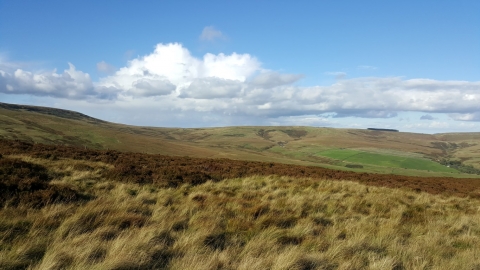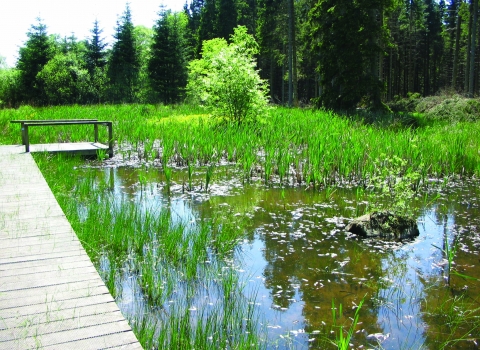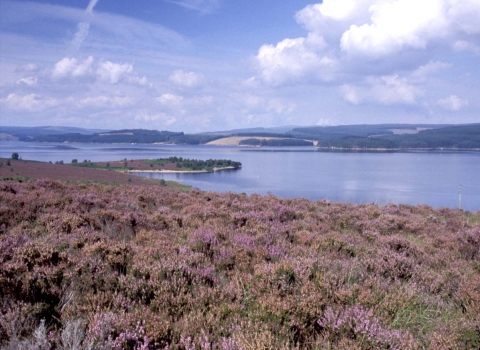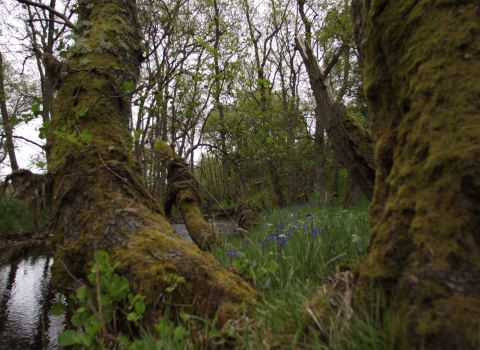
Whitelee Moor. Image by Geoff Dobbins.
Know before you go
Dogs
When to visit
Opening times
24/7/365Best time to visit
Spring to autumnAbout the reserve
A large part of the reserve is rare blanket bog, which is home to a variety of plants including sphagnum mosses, cloudberry, bog asphodel and cotton grasses. The site includes blanket bog, heather moorland, rough grassland and acid grassland, with pockets of valley fen and a few calcareous habitats. The River Rede and its tributaries add to the habitat diversity on the reserve.
It was bought by Northumberland Wildlife trust in 1999 with assistance from the Heritage Lottery Fund. Whitelee is grazed as it has been for hundreds of years, but levels of sheep and cattle are carefully controlled. Former drainage channels have been dammed to make sure the bog stays wet and over 35ha of new woodland has been planted, largely birch, rowan, willow and hazel. Some aspen has also been incorporated in the scheme while small amounts of ash and oak have been put in more sheltered spots.
On the lower slopes the heather moorland is home to birds such as red grouse, and birds of prey including merlin, buzzard, peregrine falcon and hen harrier. One of the moor's most striking insects is the northern eggar moth - its brown woolly caterpillars emerge as a large brown day-flying moth. Butterflies such as ringlet, small heath and green veined white are seen in summer. Skylark, stonechat and meadow pipit are common across the site, while on the high ground dunlin and golden plover arrive in spring to breed.
Otters often hunt along the Rede. Adder and common lizard are common here as well as palmate newts on small pools along the burn. A herd of feral goats can sometimes be seen on the border with Kielderhead. There are interesting flush areas with plants such as early marsh orchid. High up the Bateinghope Burn, near Buzzard Crag, are two sets of limekilns, which burned limestone from a nearby quarry and mine.



